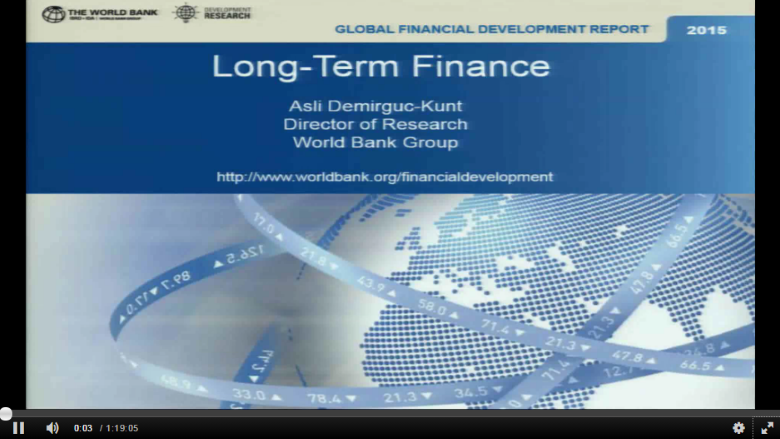A joint product of the World Bank’s Research Department and the Finance and Markets Global Practice, the Global Financial Development Report presents new research on key areas where policy makers can support the availability of long-term finance. Demirgüç-Kunt advised governments to consider four areas in particular:
- Firstly, the value of information sharing through private credit bureaus. The report found that such bureaus increase the average maturity of loans to firms.
- Secondly, a strong legal environment is crucial, particularly in the areas of contract and bankruptcy law.
- Thirdly, innovative interventions can improve financial literacy and strengthen the ability of families to access and manage financial products.
- Lastly, governments can attract a critical mass of investors by putting in place a solid framework for domestic capital markets and opening their markets to foreign institutional investors.
Bertrand Badré, Managing Director and Chief Financial Officer of the World Bank Group, focused on the critical role that development banks can play in mobilizing the private sector to supply financing for needed infrastructure projects in developing countries. According to Badré, the Global Financial Development Report “provides solid and evidence-based justification for the role of development institutions—particularly the World Bank Group—in financing development.” Infrastructure in particular “is a place where the World Bank is uniquely positioned. We can identify areas of market failure and underdevelopment, and provide the necessary incentives to bring in the private sector.”
The World Bank Group is stepping up its engagement in this area via the recently launched Global Infrastructure Facility, a platform to coordinate and integrate the efforts of Multilateral Development Banks (MDBs), governments, and private sector investors and financiers. Badré added, “I think it’s a key game changer long term. Sixteen of the world’s largest asset management, pension, and insurance funds, along with several commercial banks, representing close to $15 trillion in assets under management, have signed onto the Global Infrastructure Facility.”
Peer Stein, Director of the Finance and Markets Global Practice, emphasized the importance of long-term finance for housing, SMEs, and infrastructure in developing countries. “Cities that are built on a dollar a day look very different from places where long-term financing structures are available,” he said. He pointed to the concrete benefits to both SMEs and larger firms of reforms that put in place movable asset collateral registries.
Stein also encouraged policy makers to use the Global Financial Development Report, saying “this report translates the evidence that we have and sets out guiding principles for robust and well-designed policies.”
For information about previous and upcoming reports, visit the Global Financial Development Report’s main website.

